Microbiology with Diseases by Taxonomy 6th Edition by Robert Bauman, ISBN-13: 978-0134832302
Original price was: $75.00.$24.99Current price is: $24.99.
Microbiology with Diseases by Taxonomy 6th Edition by Robert Bauman, ISBN-13: 978-0134832302
[PDF eBook eTextbook]
- Publisher: Pearson; 6th edition (January 4, 2019)
- Language: English
- 928 pages (Large File – 218 MB)
- ISBN-10: 0134832302
- ISBN-13: 978-0134832302
For courses in introductory microbiology.
Explore the invisible world of microbiology and why it matters to human life.
Known for its unique art program and conversational writing style, Robert Bauman’s Microbiology with Diseases by Taxonomy consistently emphasizes why microbiology matters, especially in health care. The taxonomic organization of the disease chapters (Chapters 19―27) presents microbial diseases by type of pathogenic microbe, helping students recognize shared characteristics among categories of microbes.
The 6th Edition presents a revitalized and strengthened pedagogical framework based on how students learn best. Checkpoints appear throughout the text and direct students to interactive versions of text features in Mastering Microbiology. The interactive features provide just-in-time remediation that helps fill skill gaps and gives students immediate feedback on their progress with the material. New interactive concept maps provide opportunities for students to construct their knowledge and can be assigned in Mastering Microbiology. To emphasize how our understanding of microbiology is constantly expanding, the new edition integrates cutting-edge microbiology research that is critical for today’s students. New Research on Microbial metabolism is introduced in Chapter 5 as well as recent findings on recombinant DNA technology and CRISPR technique are found in Chapter 8.
Table of Contents:
Explore the Invisible World of Microbiology and Why it Matters to Human Life
Maximize Learning with Effective Study Tools
Connect Lecture and Lab
Why Microbiology Matters in Health Care
Sweat the Small Stuff
Expand and Apply Learning in Mastering Microbiology™
Give Students Anytime, Anywhere Access with the Pearson eText App
The Very Best Instructor Resources and Support
Micro Biology with Diseases by Taxonomy
About the Author
About the Clinical Consultants
Preface
New to This Edition
Chapter-by-Chapter Revisions
Reviewers for the Sixth Edition
Contents
Feature Boxes
1 A Brief History of Microbiology
The Early Years of Microbiology
What Does Life Really Look Like?
Learning Outcomes
How Can Microbes Be Classified?
Learning Outcomes
Bacteria and Archaea
Fungi
Protozoa
Algae
Other Organisms of Importance to Microbiologists
The Golden Age of Microbiology
Learning Outcomes
Does Microbial Life Spontaneously Generate?
Learning Outcomes
Redi’s Experiments
Needham’s Experiments
Spallanzani’s Experiments
Pasteur’s Experiments
The Scientific Method
What Causes Fermentation?
Learning Outcomes
Pasteur’s Experiments
Buchner’s Experiments
What Causes Disease?
Learning Outcomes
Koch’s Experiments
Koch’s Postulates
Gram’s Stain
How Can We Prevent Infection and Disease?
Learning Outcomes
Semmelweis and Hand Washing
Lister’s Antiseptic Technique
Nightingale and Nursing
Snow and Epidemiology
Jenner’s Vaccine
Ehrlich’s “Magic Bullets”
The Modern Age of Microbiology
Learning Outcome
What Are the Basic Chemical Reactions of Life?
How Do Genes Work?
Microbial Genetics
Molecular Biology
Recombinant DNA Technology
Gene Therapy
What Roles Do Microorganisms Play in the Environment?
Learning Outcome
How Do We Defend Against Disease?
What Will the Future Hold?
Chapter Summary
The Early Years of Microbiology (pp. 2–7)
The Golden Age of Microbiology (pp. 7–18)
The Modern Age of Microbiology (pp. 18–22)
Questions for Review
Multiple Choice
Fill in the Blanks
Short Answer
Matching
Visualize It!
Critical Thinking
Concept Mapping
2 The Chemistry of Microbiology
Atoms
Learning Outcome
Atomic Structure
Learning Outcomes
Isotopes
Learning Outcome
Electron Configurations
Learning Outcome
Chemical Bonds
Learning Outcomes
Nonpolar Covalent Bonds
Learning Outcomes
Polar Covalent Bonds
Learning Outcome
Ionic Bonds
Learning Outcomes
Hydrogen Bonds
Learning Outcome
Chemical Reactions
Learning Outcome
Synthesis Reactions
Learning Outcomes
Decomposition Reactions
Learning Outcome
Exchange Reactions
Learning Outcome
Water, Acids, Bases, and Salts
Water
Learning Outcome
Acids and Bases
Learning Outcome
Salts
Organic Macromolecules
Functional Groups
Learning Outcome
Lipids
Learning Outcomes
Fats
Phospholipids
Waxes
Steroids
Carbohydrates
Learning Outcome
Monosaccharides
Disaccharides
Polysaccharides
Proteins
Learning Outcomes
Amino Acids
Peptide Bonds
Protein Structure
Nucleotides and Nucleic Acids
Learning Outcomes
Nucleotides and Nucleosides
Nucleic Acid Structure
Nucleic Acid Function
ATP (Adenosine Triphosphate)
Chapter Summary
Atoms (pp. 28–31)
Chemical Bonds (pp. 31–35)
Chemical Reactions (pp. 35–37)
Water, Acids, Bases, and Salts (pp. 37–40)
Organic Macromolecules (pp. 40–53)
Questions for Review
Multiple Choice
Fill in the Blanks
Visualize It!
Short Answer
Critical Thinking
Concept Mapping
3 Cell Structure and Function
Processes of Life
Learning Outcome
Prokaryotic and Eukaryotic Cells: An Overview
Learning Outcome
External Structures of Bacterial Cells
Glycocalyces
Learning Outcomes
Flagella
Learning Outcomes
Structure
Arrangement
Function
Fimbriae and Pili
Learning Outcome
Bacterial Cell Walls
Learning Outcomes
Gram-Positive Bacterial Cell Walls
Learning Outcome
Gram-Negative Bacterial Cell Walls
Learning Outcome
Bacteria Without Cell Walls
Bacterial Cytoplasmic Membranes
Structure
Learning Outcomes
Function
Learning Outcomes
Passive processes
Diffusion
Facilitated Diffusion
Osmosis
Active Processes
Active Transport
Group Translocation
Cytoplasm of Bacteria
Learning Outcomes
Cytosol
Inclusions
Endospores
Nonmembranous Organelles
Learning Outcome
Ribosomes
Cytoskeleton
External Structures of Archaea
Glycocalyces
Learning Outcome
Flagella
Learning Outcomes
Fimbriae and Hami
Learning Outcomes
Archaeal Cell Walls and Cytoplasmic Membranes
Learning Outcomes
Cytoplasm of Archaea
Learning Outcome
External Structure of Eukaryotic Cells
Glycocalyces
Learning Outcome
Eukaryotic Cell Walls and Cytoplasmic Membranes
Learning Outcomes
Cytoplasm of Eukaryotes
Learning Outcomes
Flagella
Learning Outcome
Structure and Arrangement
Function
Cilia
Learning Outcomes
Other Nonmembranous Organelles
Learning Outcomes
Ribosomes
Cytoskeleton
Centrioles and Centrosome
Membranous Organelles
Learning Outcomes
Nucleus
Endoplasmic Reticulum
Golgi Body
Lysosomes, Peroxisomes, Vacuoles, and Vesicles
Mitochondria
Chloroplasts
Endosymbiotic Theory
Learning Outcomes
Chapter Summary
Processes of Life (p. 59)
Prokaryotic and Eukaryotic Cells: An Overview (pp. 59–61)
External Structures of Bacterial Cells (pp. 62–66)
Bacterial Cell Walls (pp. 66–69)
Bacterial Cytoplasmic Membranes (pp. 69–74)
Cytoplasm of Bacteria (pp. 74–77)
External Structures of Archaea (pp. 77–78)
Archaeal Cell Walls and Cytoplasmic Membranes (p. 78-79)
Cytoplasm of Archaea (pp. 79–80)
External Structure of Eukaryotic Cells (p. 80)
Eukaryotic Cell Walls and Cytoplasmic Membranes (pp. 80–82)
Cytoplasm of Eukaryotes (pp. 82–89)
Questions For Review
Multiple Choice
Matching
Visualize It!
Short Answer
Critical Thinking
Concept Mapping
4 Microscopy, Staining, and Classification
Units of Measurement
Learning Outcomes
Microscopy
Learning Outcome
General Principles of Microscopy
Learning Outcomes
Wavelength of Radiation
Magnification
Resolution
Contrast
Light Microscopy
Learning Outcomes
Bright-Field Microscopes
Simple Microscopes
Compound Microscopes
Dark-Field Microscopes
Phase Microscopes
Phase-Contrast Microscopes
Differential Interference Contrast Microscopes
Fluorescence Microscopes
Confocal Microscopes
Electron Microscopy
Learning Outcome
Transmission Electron Microscopes
Scanning Electron Microscopes
Probe Microscopy
Learning Outcome
Scanning Tunneling Microscopes
Atomic Force Microscopes
Staining
Preparing Specimens for Staining
Learning Outcome
Principles of Staining
Learning Outcome
Simple Stains
Learning Outcome
Differential Stains
Gram Stain
Acid-Fast Stain
Endospore Stain
Histological Stains
Special Stains
Negative (Capsule) Stain
Flagellar Stain
Staining for Electron Microscopy
Learning Outcome
Classification and Identification of Microorganisms
Learning Outcome
Linnaeus and Taxonomic Categories
Learning Outcomes
Domains
Learning Outcome
Taxonomic and Identifying Characteristics
Learning Outcome
Physical Characteristics
Biochemical Tests
Serological Tests
Phage Typing
MALDI-TOF Mass Spectrometry
Analysis of Nucleic Acids
Taxonomic Keys
Chapter Summary
Units of Measurement (p. 97)
Microscopy (pp. 97–106)
Staining (pp. 106–112)
Classification and Identification of Microorganisms (pp. 112–119)
Questions For Review
Multiple Choice
Fill in the Blanks
Visualize It!
Short Answer
Critical Thinking
Concept Mapping
5 Microbial Metabolism
Basic Chemical Reactions Underlying Metabolism
Catabolism and Anabolism
Learning Outcome
Oxidation and Reduction Reactions
Learning Outcome
ATP Production and Energy Storage
Learning Outcome
The Roles of Enzymes in Metabolism
Learning Outcomes
Naming and Classifying Enzymes
The Makeup of Enzymes
Enzyme Activity
Temperature
pH
Enzyme and Substrate Concentration
Control of Enzymatic Activity
Carbohydrate Catabolism
Learning Outcome
Glycolysis
Cellular Respiration
Learning Outcomes
Synthesis of Acetyl-CoA
The Citric Acid (Krebs) Cycle
Electron Transport
Chemiosmosis
Metabolic Diversity
Learning Outcomes
Fermentation
Learning Outcomes
Other Catabolic Pathways
Lipid Catabolism
Learning Outcome
Protein Catabolism
Learning Outcome
Photosynthesis
Learning Outcome
Chemicals and Structures
Learning Outcome
Light-Dependent Reactions
Learning Outcomes
Cyclic Photophosphorylation
Noncyclic Photophosphorylation
Light-Independent Reactions
Learning Outcomes
Other Anabolic Pathways
Learning Outcome
Carbohydrate Biosynthesis
Learning Outcome
Lipid Biosynthesis
Learning Outcome
Amino Acid Biosynthesis
Learning Outcome
Nucleotide Biosynthesis
Learning Outcome
Integration and Regulation of Metabolic Functions
Learning Outcomes
Chapter Summary
Basic Chemical Reactions Underlying Metabolism (pp. 125–133)
Carbohydrate Catabolism (pp. 133–142)
Other Catabolic Pathways (pp. 142–144)
Photosynthesis (pp. 144–149)
Other Anabolic Pathways (pp. 149–151)
Integration and Regulation of Metabolic Functions (pp. 151–153)
Questions For Review
Multiple Choice
Matching
Fill in the Blanks
Visualize It!
Short Answer
Critical Thinking
Concept Mapping
6 Microbial Nutrition and Growth
Growth Requirements
Nutrients: Chemical and Energy Requirements
Learning Outcomes
Sources of Carbon, Energy, and Electrons
Oxygen Requirements
Nitrogen Requirements
Other Chemical Requirements
Physical Requirements
Learning Outcome
Temperature
pH
Physical Effects of Water
Osmotic Pressure
Hydrostatic Pressure
Associations and Biofilms
Learning Outcome
Culturing Microorganisms
Clinical Sampling
Learning Outcome
Obtaining Pure Cultures
Learning Outcome
Streak Plates
Pour Plates
Other Isolation Techniques
Culture Media
Learning Outcomes
Defined Media
Complex Media
Selective Media
Enrichment Culture
Differential Media
Anaerobic Media
Transport Media
Special Culture Techniques
Learning Outcome
Animal and Cell Culture
Low-Oxygen Culture
Preserving Cultures
Learning Outcome
Growth of Microbial Populations
Learning Outcome
Generation Time
Learning Outcome
Mathematical Considerations in Population Growth
Learning Outcome
Phases of Microbial Population Growth
Learning Outcomes
Lag Phase
Log Phase
Stationary Phase
Death Phase
Continuous Culture in a Chemostat
Learning Outcome
Measuring Microbial Reproduction
Learning Outcome
Direct Methods Not Requiring Incubation
Microscopic Counts
Electronic Counters
Direct Methods Requiring Incubation
Serial Dilution and Viable Plate Counts
Membrane Filtration
Most Probable Number
Indirect Methods
Turbidity
Metabolic Activity
Dry Weight
Molecular Methods
Chapter Summary
Growth Requirements (pp. 162–171)
Culturing Microorganisms (pp. 171–179)
Growth of Microbial Populations (pp. 179–187)
Questions For Review
Multiple Choice
Fill in the Blanks
Visualize It!
Short Answer
Critical Thinking
Concept Mapping
7 Microbial Genetics
The Structure and Replication of Genomes
Learning Outcome
The Structure of Nucleic Acids
Learning Outcome
The Structure of Prokaryotic Genomes
Learning Outcomes
Prokaryotic Chromosomes
Plasmids
The Structure of Eukaryotic Genomes
Learning Outcome
Nuclear Chromosomes
Extranuclear Chromosomes in Eukaryotes
DNA Replication
Learning Outcomes
Initial Processes in Bacterial DNA Replication
Continual Synthesis of the Leading Strand
Fragmented Synthesis of the Lagging Strand
Other Characteristics of Bacterial DNA Replication
Replication of Eukaryotic DNA
Gene Function
The Relationship Between Genotype and Phenotype
Learning Outcome
The Transfer of Genetic Information
Learning Outcome
The Events in Transcription
Learning Outcomes
Initiation of Transcription
Elongation of the RNA Transcript
Termination of Transcription
Self-Termination
Rho-Dependent Termination
Transcriptional Differences in Eukaryotes
Translation
Learning Outcomes
The Genetic Code
Participants in Translation
Messenger RNA
Transfer RNA
Ribosomes and Ribosomal RNA
Events in Translation
Initiation
Elongation
Termination
Translational Differences in Eukaryotes
Regulation of Genetic Expression
Learning Outcomes
The Nature of Prokaryotic Operons
The Lactose Operon, an Inducible Operon
Positive Regulation by CAP
Repression and Induction
The Tryptophan Operon, a Repressible Operon
RNA Molecules Can Control Translation
Mutations of Genes
Learning Outcome
Types of Mutations
Learning Outcome
Effects of Point Mutations
Learning Outcome
Mutagens
Learning Outcomes
Radiation
Chemical Mutagens
Nucleotide Analogs
Nucleotide-Altering Chemicals
Frameshift Mutagens
Frequency of Mutation
Learning Outcome
DNA Repair
Learning Outcome
Direct Repair
Single-Strand Repair
Error-Prone Repair
Identifying Mutants, Mutagens, and Carcinogens
Learning Outcomes
Positive Selection
Negative (Indirect) Selection
The Ames Test for Identifying Mutagens
Genetic Recombination and Transfer
Learning Outcome
Horizontal Gene Transfer Among Prokaryotes
Learning Outcomes
Transformation
Transduction
Bacterial Conjugation
Transposons and Transposition
Learning Outcomes
Chapter Summary
The Structure and Replication of Genomes (pp. 194–202)
Gene Function (pp. 202–216)
Mutations of Genes (pp. 216–223)
Genetic Recombination and Transfer (pp. 223–230)
Questions For Review
Multiple Choice
Fill in the Blanks
Short Answer
Visualize It!
Critical Thinking
Concept Mapping
8 Recombinant DNA Technology
The Role of Recombinant DNA Technology in Biotechnology
Learning Outcomes
Tools of Recombinant DNA Technology
Mutagens
Learning Outcome
The Use of Reverse Transcriptase to Synthesize cDNA
Learning Outcome
Synthetic Nucleic Acids
Learning Outcomes
Restriction Enzymes
Learning Outcomes
Vectors
Learning Outcome
CRISPR
Learning Outcome
Gene Libraries
Learning Outcome
Techniques of Recombinant DNA Technology
Multiplying DNA In Vitro: The Polymerase Chain Reaction
Learning Outcome
Selecting a Clone of Recombinant Cells
Learning Outcome
Separating DNA Molecules: Gel Electrophoresis and the Southern Blot
Learning Outcome
DNA Microarrays
Learning Outcome
Inserting DNA into Cells
Learning Outcome
Applications of Recombinant DNA Technology
Genetic Mapping
Learning Outcomes
Locating Genes
Genomics and Nucleotide Sequencing
Functional Genomics
Microbial Community Studies
Pharmaceutical and Therapeutic Applications
Learning Outcomes
Protein Synthesis
Vaccine Production
Genetic Screening
Gene Therapy
Medical Diagnosis
Xenotransplantation
Biomedical Animal Models
Agricultural Applications
Learning Outcome
Herbicide Tolerance
Pest Resistance
Salt Tolerance
Freeze Resistance
Improvements in Nutritional Value and Yield
The Ethics and Safety of Recombinant DNA Technology
Learning Outcome
Chapter Summary
The Role of Recombinant DNA Technology in Biotechnology (p. 238)
Tools of Recombinant DNA Technology (p. 238–243)
Techniques of Recombinant DNA Technology (p. 243–248)
Applications of Recombinant DNA Technology (pp. 248–256)
The Ethics and Safety of Recombinant DNA Technology (pp. 256–257)
Questions For Review
Multiple Choice
Modified True/False
Short Answer
Visualize It!
Critical Thinking
Concept Mapping
9 Controlling Microbial Growth in the Environment
Basic Principles of Microbial Control
Terminology of Microbial Control
Learning Outcomes
Microbial Death Rates
Learning Outcome
Action of Antimicrobial Agents
Learning Outcome
Alteration of Cell Walls and Membranes
Damage to Proteins and Nucleic Acids
The Selection of Microbial Control Methods
Factors Affecting the Efficacy of Antimicrobial Methods
Learning Outcomes
Site to Be Treated
Relative Susceptibility of Microorganisms
Environmental Conditions
Biosafety Levels
Learning Outcome
Physical Methods of Microbial Control
Learning Outcome
Heat-Related Methods
Learning Outcomes
Moist Heat
Boiling
Autoclaving
Pasteurization
Ultra-High-Temperature Sterilization
Dry Heat
Refrigeration and Freezing
Learning Outcome
Desiccation and Lyophilization
Learning Outcome
Filtration
Learning Outcome
Osmotic Pressure
Learning Outcome
Radiation
Learning Outcome
Ionizing Radiation
Nonionizing Radiation
Chemical Methods of Microbial Control
Learning Outcome
Phenol and Phenolics
Learning Outcome
Alcohols
Learning Outcome
Halogens
Learning Outcome
Oxidizing Agents
Learning Outcome
Surfactants
Learning Outcome
Heavy Metals
Learning Outcome
Aldehydes
Learning Outcome
Gaseous Agents
Learning Outcome
Enzymes
Learning Outcome
Antimicrobial Drugs
Learning Outcome
Methods for Evaluating Disinfectants and Antiseptics
Learning Outcome
Phenol Coefficient
Use-Dilution Test
Kelsey-Sykes Capacity Test
In-Use Test
Development of Resistant Microbes
Chapter Summary
Basic Principles of Microbial Control (pp. 263–266)
The Selection of Microbial Control Methods (pp. 266–268)
Physical Methods of Microbial Control (pp. 268–276)
Chemical Methods of Microbial Control (pp. 276–282)
Questions For Review
Multiple Choice
Short Answer
Visualize It!
Critical Thinking
Concept Mapping
10 Controlling Microbial Growth in the Body: Antimicrobial Drugs
The History of Antimicrobial Agents
Learning Outcomes
Mechanisms of Antimicrobial Action
Learning Outcomes
Inhibition of Cell Wall Synthesis
Learning Outcome
Inhibition of Synthesis of Bacterial Walls
Inhibition of Synthesis of Fungal Walls
Inhibition of Protein Synthesis
Learning Outcomes
Interference with Prokaryotic Ribosomes
Interference with Charging of Transfer RNA Molecules
Disruption of Cytoplasmic Membranes
Learning Outcome
Inhibition of Metabolic Pathways
Learning Outcomes
Inhibition of Nucleic Acid Synthesis
Learning Outcome
Prevention of Virus Attachment, Entry, or Uncoating
Learning Outcome
Clinical Considerations in Prescribing Antimicrobial Drugs
Learning Outcome
Spectrum of Action
Learning Outcome
Effectiveness
Learning Outcome
Diffusion Susceptibility Test
Minimum Inhibitory Concentration (MIC) Test
Minimum Bactericidal Concentration (MBC) Test
Routes of Administration
Learning Outcome
Safety and Side Effects
Learning Outcomes
Toxicity
Allergies
Disruption of Normal Microbiota
Resistance to Antimicrobial Drugs
The Development of Resistance and Persister Cells
Learning Outcomes
Mechanisms of Resistance
Learning Outcomes
Multiple Resistance and Cross Resistance
Learning Outcome
Retarding Resistance
Learning Outcome
Chapter Summary
The History of Antimicrobial Agents (pp. 289)
Mechanisms of Antimicrobial Action (pp. 289–298)
Clinical Considerations in Prescribing Antimicrobial Drugs (pp. 298–303)
Resistance to Antimicrobial Drugs (pp. 303–308)
Questions For Review
Multiple Choice
Visualize It!
Short Answer
Critical Thinking
Concept Mapping
11 Characterizing and Classifying Prokaryotes
General Characteristics of Prokaryotic Organisms
Morphology of Prokaryotic Cells
Learning Outcome
Endospores
Learning Outcome
Reproduction of Prokaryotic Cells
Learning Outcomes
Arrangements of Prokaryotic Cells
Learning Outcome
Modern Prokaryotic Classification
Learning Outcomes
Survey of Archaea
Learning Outcome
Extremophiles
Learning Outcome
Thermophiles
Halophiles
Methanogens
Learning Outcome
Survey of Bacteria
Deeply Branching and Phototrophic Bacteria
Learning Outcomes
Deeply Branching Bacteria
Phototrophic Bacteria
Cyanobacteria
Green and Purple Phototrophic Bacteria
Low G + C Gram-Positive Bacteria
Learning Outcomes
Clostridia
Mycoplasmas
Other Low G + C Gram-Positive Bacilli and Cocci
High G + C Gram-Positive Bacteria
Learning Outcomes
Corynebacterium
Mycobacterium
Actinomycetes
Gram-Negative Proteobacteria
Learning Outcome
Class Alphaproteobacteria
Learning Outcomes
Nitrogen Fixers
Nitrifying Bacteria
Purple Nonsulfur Phototrophs
Pathogenic Alphaproteobacteria
Other Alphaproteobacteria
Class Betaproteobacteria
Learning Outcome
Pathogenic Betaproteobacteria
Other Betaproteobacteria
Class Gammaproteobacteria
Learning Outcomes
Purple Sulfur Bacteria
Intracellular Pathogens
Methane Oxidizers
Glycolytic Facultative Anaerobes
Pseudomonads
Class Deltaproteobacteria
Learning Outcome
Class Epsilonproteobacteria
Learning Outcome
Class Zetaproteobacteria
Learning Outcome
Other Gram-Negative Bacteria
Learning Outcomes
Chlamydias
Spirochetes
Bacteroids
Chapter Summary
General Characteristics of Prokaryotic Organisms(pp. 325–329)
Modern Prokaryotic Classification(p. 329)
Survey of Archaea(pp. 329–332)
Survey of Bacteria(pp. 332–348)
Questions For Review
Modified True/False
Multiple Choice
Matching
Short Answer
Visualize It!
Critical Thinking
Concept Mapping
12 Characterizing and Classifying Eukaryotes
General Characteristics of Eukaryotic Organisms
Reproduction of Eukaryotes
Learning Outcomes
Nuclear Division
Mitosis
Meiosis
Cytokinesis (Cytoplasmic Division)
Schizogony
Classification of Eukaryotic Organisms
Learning Outcomes
Protozoa
Learning Outcome
Distribution of Protozoa
Morphology of Protozoa
Nutrition of Protozoa
Reproduction of Protozoa
Classification of Protozoa
Learning Outcomes
Parabasala
Diplomonadida
Euglenozoa
Euglenids
Kinetoplastids
Alveolates
Ciliates
Apicomplexans
Dinoflagellates
Rhizaria
Amoebozoa
Fungi
Learning Outcome
The Significance of Fungi
Learning Outcome
Morphology of Fungi
Learning Outcome
Nutrition of Fungi
Learning Outcome
Reproduction of Fungi
Learning Outcomes
Budding and Asexual Spore Formation
Sexual Spore Formation
Classification of Fungi
Learning Outcomes
Division Zygomycota
Microsporidia
Division Ascomycota
Division Basidiomycota
Deuteromycetes
Lichens
Learning Outcomes
Algae
Learning Outcome
Distribution of Algae
Morphology of Algae
Reproduction of Algae
Learning Outcome
Classification of Algae
Learning Outcomes
Division Chlorophyta (Green Algae)
Kingdom Rhodophyta (Red Algae)
Phaeophyta (Brown Algae)
Chrysophyta (Golden Algae, Yellow-Green Algae, and Diatoms)
Water Molds
Learning Outcome
Other Eukaryotes of Microbiological Interest: Parasitic Helminths and Vectors
Learning Outcomes
Arachnids
Learning Outcomes
Insects
Learning Outcomes
Chapter Summary
General Characteristics of Eukaryotic Organisms (pp. 354–358)
Protozoa (pp. 358–364)
Fungi (pp. 364–373)
Algae (pp. 373–376)
Water Molds (pp. 376–377)
Other Eukaryotes of Microbiological Interest: Parasitic Helminths and Vectors (pp. 377–379)
Questions For Review
Multiple Choice
Matching
Visualize It!
Short Answer
Fill in the Blanks
Critical Thinking
Concept Mapping
13 Characterizing and Classifying Viruses, Viroids, and Prions
Characteristics of Viruses
Learning Outcome
Genetic Material of Viruses
Learning Outcome
Hosts of Viruses
Learning Outcomes
Sizes of Viruses
Capsid Morphology
Learning Outcome
Viral Shapes
The Viral Envelope
Learning Outcome
Classification of Viruses
Learning Outcome
Viral Replication
Lytic Replication of Bacteriophages
Learning Outcome
Attachment 1
Entry 2
Synthesis 3
Assembly 4
Release 5
Lysogenic Replication of Bacteriophages
Learning Outcome
Replication of Animal Viruses
Learning Outcomes
Attachment of Animal Viruses
Entry and Uncoating of Animal Viruses
Synthesis of DNA Viruses of Animals
dsDNA Viruses
ssDNA Viruses
Synthesis of RNA Viruses of Animals
Positive-Sense ssRNA Viruses
Retroviruses
Negative-Sense ssRNA Viruses
dsRNA Viruses
Assembly and Release of Animal Viruses
Latency of Animal Viruses
The Role of Viruses in Cancer
Learning Outcomes
Culturing Viruses in the Laboratory
Learning Outcomes
Culturing Viruses in Mature Organisms
Learning Outcomes
Culturing Viruses in Bacteria
Culturing Viruses in Plants and Animals
Culturing Viruses in Embryonated Chicken Eggs
Culturing Viruses in Cell (Tissue) Culture
Learning Outcome
Are Viruses Alive?
Learning Outcome
Other Parasitic Particles: Viroids and Prions
Characteristics of Viroids
Learning Outcomes
Characteristics of Prions
Learning Outcomes
Chapter Summary
Characteristics of Viruses(pp. 385–390)
Classification of Viruses(pp. 390–392)
Viral Replication(pp. 392–401)
The Role of Viruses in Cancer(pp. 401–402)
Culturing Viruses in the Laboratory(pp. 402–404)
Are Viruses Alive?(p. 404)
Other Parasitic Particles: Viroids and Prions (pp. 404–408)
Questions For Review
Multiple Choice
Matching
Visualize It
Short Answer
Critical Thinking
Concept Mapping
14 Infection, Infectious Diseases, and Epidemiology
Symbiotic Relationships Between Microbes and Their Hosts
Types of Symbiosis
Learning Outcomes
Mutualism
Commensalism
Amensalism
Parasitism
Microbiome of Humans
Learning Outcome
Resident Microbiota
Transient Microbiota
Acquisition of the Microbiome
How Normal Microbiota Become Opportunistic Pathogens
Learning Outcome
Reservoirs of Infectious Diseases of Humans
Learning Outcome
Animal Reservoirs
Human Carriers
Nonliving Reservoirs
The Invasion and Establishment of Microbes in Hosts: Infection
Exposure to Microbes: Contamination and Infection
Learning Outcome
Portals of Entry
Learning Outcome
Skin
Mucous Membranes
Placenta
The Parenteral Route
The Role of Adhesion in Infection
Learning Outcomes
The Nature of Infectious Disease
Learning Outcome
Manifestations of Disease: Symptoms, Signs, and Syndromes
Learning Outcome
Causation of Disease: Etiology
Learning Outcomes
Using Koch’s Postulates
Exceptions to Koch’s Postulates
Virulence Factors of Infectious Agents
Learning Outcome
Extracellular Enzymes
Toxins
Endotoxins
Antiphagocytic Factors
Capsules
Antiphagocytic Chemicals
The Stages of Infectious Diseases
Learning Outcome
Incubation Period
Prodromal Period
Illness
Decline
Convalescence
The Movement of Pathogens Out of Hosts: Portals of Exit
Modes of Infectious Disease Transmission
Learning Outcomes
Contact Transmission
Vehicle Transmission
Vector Transmission
Classification of Infectious Diseases
Learning Outcomes
Epidemiology of Infectious Diseases
Learning Outcome
Frequency of Disease
Learning Outcomes
Epidemiological Studies
Learning Outcome
Descriptive Epidemiology
Analytical Epidemiology
Experimental Epidemiology
Hospital Epidemiology: Healthcare-Associated (Nosocomial) Infections
Learning Outcomes
Types of Healthcare-Associated Infections
Factors Influencing Healthcare- Associated Infections
Control of Healthcare-Associated Infections
Epidemiology and Public Health
Learning Outcome
The Sharing of Data Among Public Health Organizations
The Role of Public Health Agencies in Interrupting Disease Transmission
Public Health Education
Chapter Summary
Symbiotic Relationships Between Microbes and Their Hosts(pp. 414–418)
Reservoirs of Infectious Diseases of Humans(pp. 418–420)
The Invasion and Establishment of Microbes in Hosts: Infection(pp. 420–422)
The Nature of Infectious Disease(pp. 422–430)
The Movement of Pathogens Out of Hosts: Portals of Exit(p. 430)
Modes of Infectious Disease Transmission (pp. 430–432)
Classification of Infectious Diseases(pp. 432–434)
Epidemiology of Infectious Diseases(pp. 434—441)
Questions For Review
Multiple Choice
Fill in the Blanks
Short Answer
Visualize It!
Critical Thinking
Concept Mapping
15 Innate Immunity
An Overview of the Body’s Defenses
Learning Outcomes
The Body’s First Line of Defense
The Role of Skin in Innate Immunity
Learning Outcome
The Role of Mucous Membranes in Innate Immunity
Learning Outcomes
The Role of the Lacrimal Apparatus in Innate Immunity
Learning Outcome
The Role of the Microbiome in Innate Immunity
Learning Outcome
Other First-Line Defenses
Learning Outcome
Antimicrobial Peptides
Other Processes and Chemicals
The Body’s Second Line of Defense
Learning Outcome
Defense Components of Blood
Learning Outcomes
Plasma
Defensive Blood Cells: Leukocytes
Lab Analysis of Leukocytes
Phagocytosis
Learning Outcome
Chemotaxis
Adhesion
Ingestion
Phagosome Maturation and Microbial Killing
Elimination
Nonphagocytic Killing
Learning Outcome
Killing by Eosinophils
Killing by Natural Killer Lymphocytes
Killing by Neutrophils
Nonspecific Chemical Defenses Against Pathogens
Learning Outcomes
Toll-Like Receptors
NOD Proteins
Interferons
Complement
Complement Cascade
Inflammation
Learning Outcome
Dilation and Increased Permeability of Blood Vessels
Migration of Phagocytes
Tissue Repair
Fever
Learning Outcome
Chapter Summary
An Overview of the Body’s Defenses(p. 447)
The Body’s First Line of Defense(pp. 447–451)
The Body’s Second Line of Defense(pp. 451–466)
Questions For Review
Multiple Choice
Modified True/False
Matching
Short Answer
Visualize It!
Critical Thinking
Concept Mapping
16 Adaptive Immunity
Overview of Adaptive Immunity
Learning Outcomes
Elements of Adaptive Immunity
The Tissues and Organs of the Lymphatic System
Learning Outcomes
The Lymphatic Vessels and the Flow of Lymph
Lymphoid Organs
Antigens
Learning Outcomes
Properties of Antigens
Types of Antigens
Preparation for an Adaptive Immune R

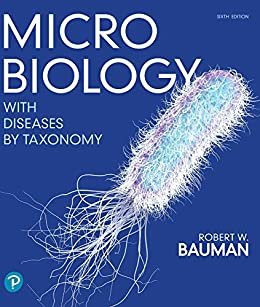
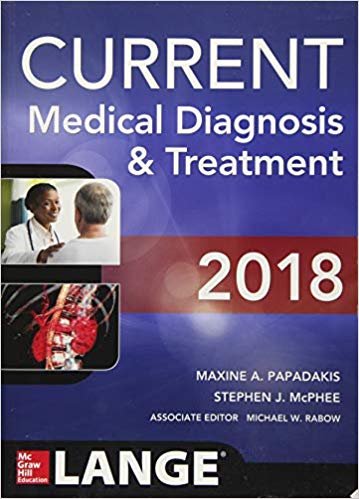
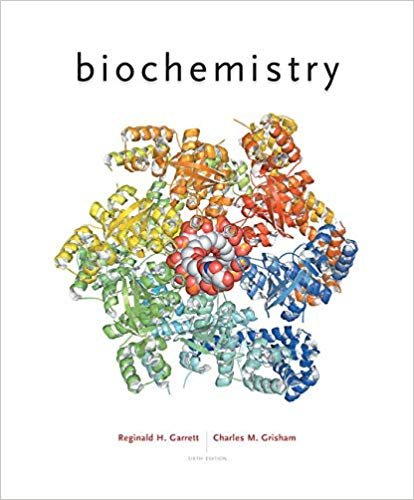
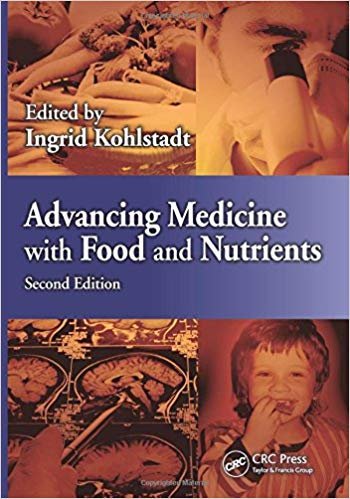
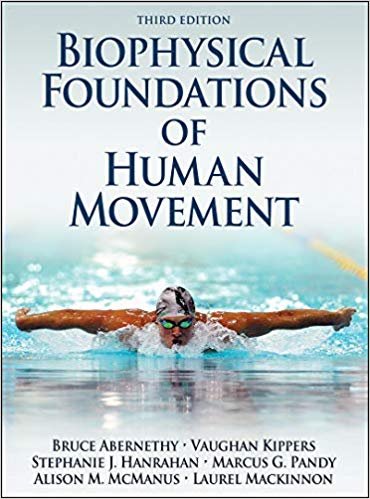
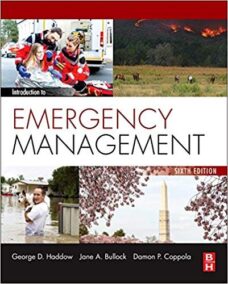
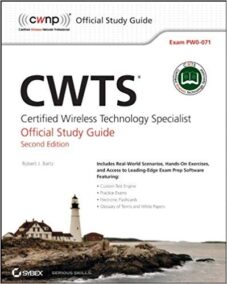
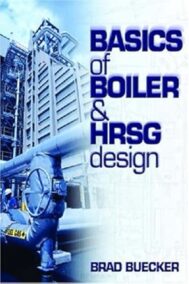

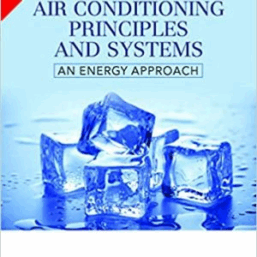
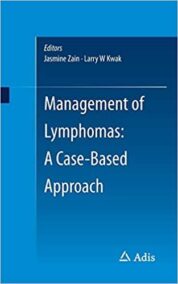
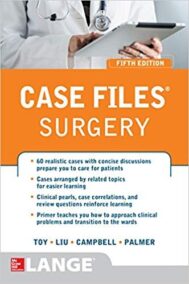
Reviews
There are no reviews yet.